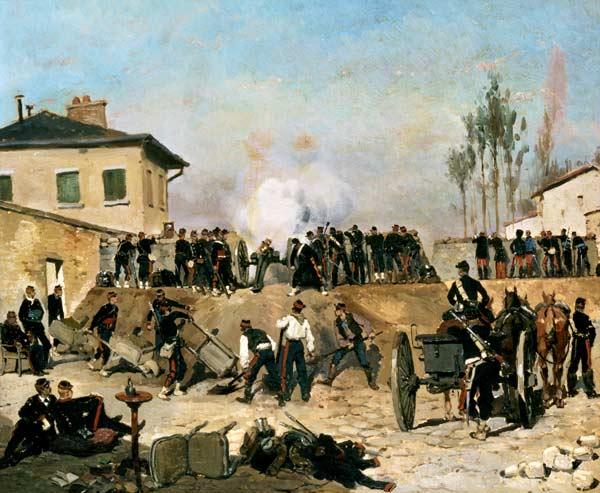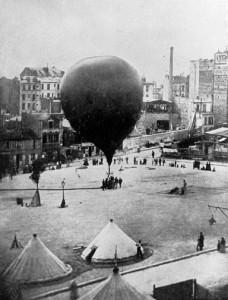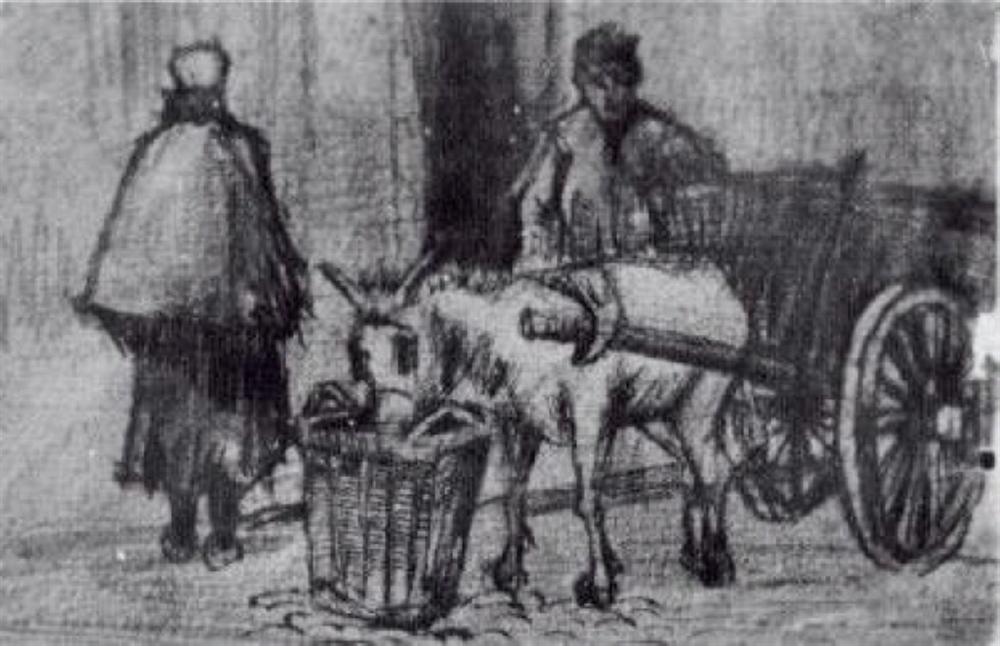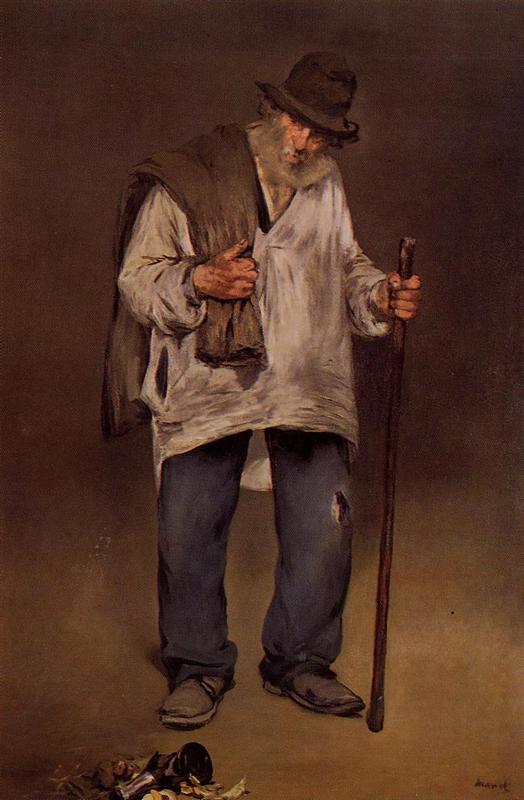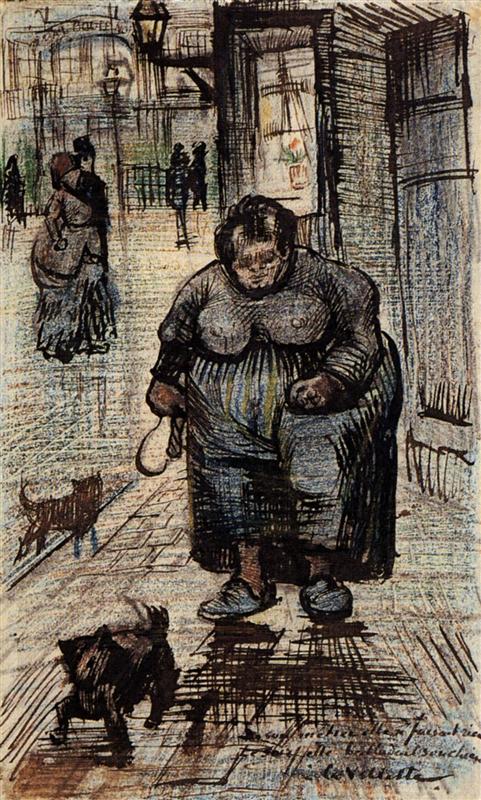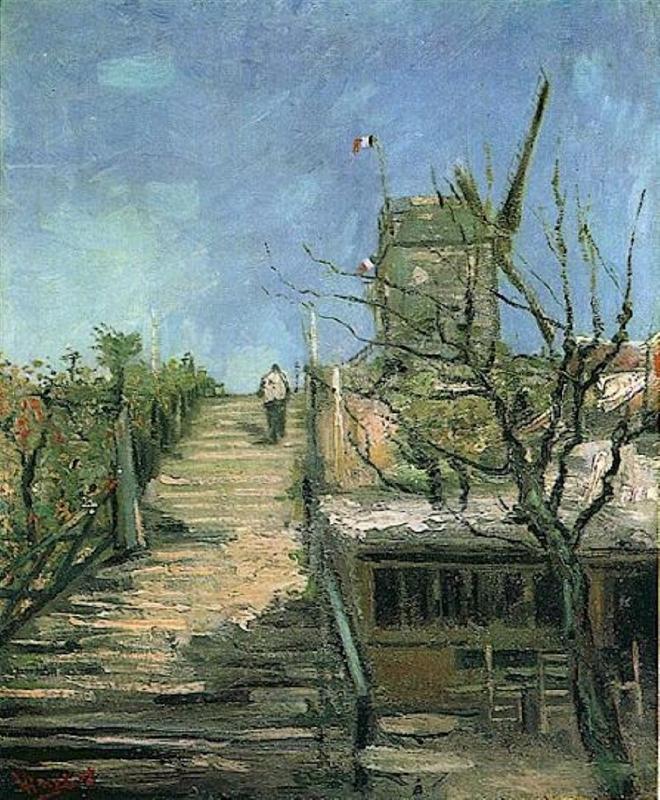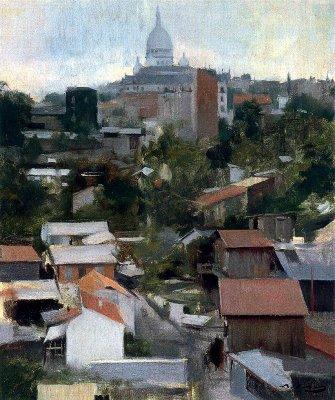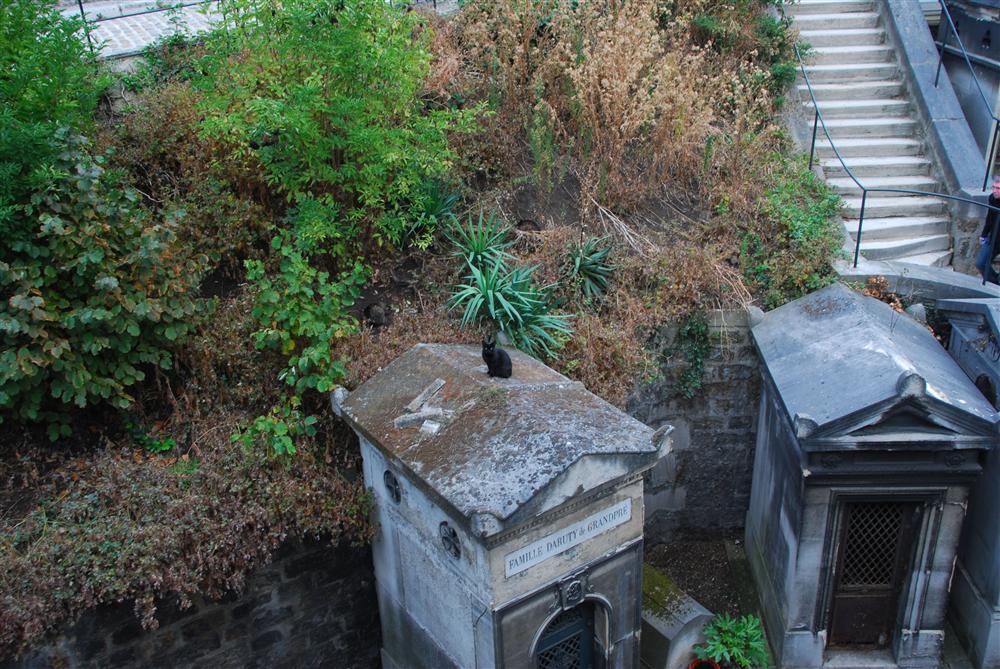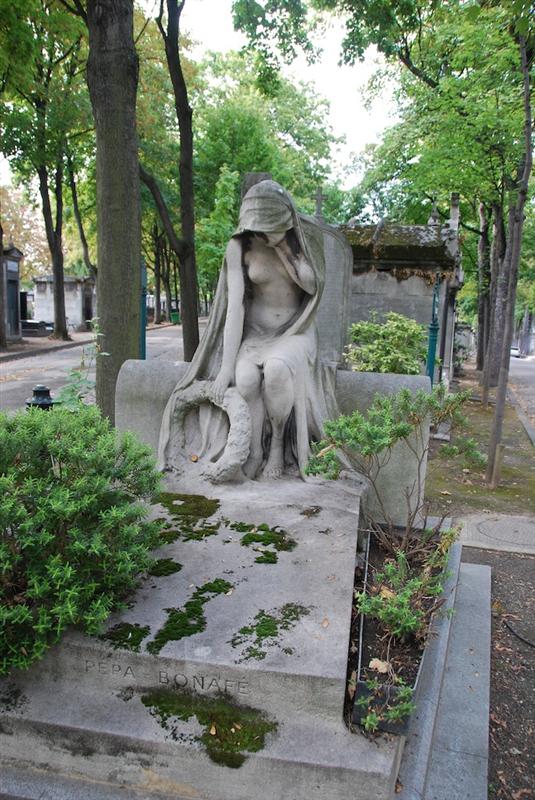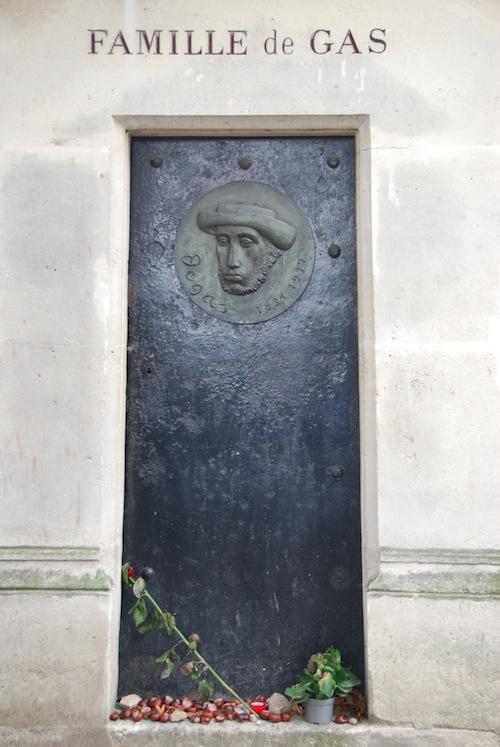Chapter 6 – Portrait of a Rat Catcher
The Seige of Paris
As the siege had fallen in the autumn, every vegetable garden in Montmartre and the Maquis was brimming with maize and snail-scarred squash.
Montmartre Vegetable Gardens – Vincent Van Gogh – 1886
for a while because they could graze on the back slope of the butte and in the fencerows of the Maquis, the shantytown by the cemetery, but when the grass was nibbled to nubs and the National Guard’s horses were being slaughtered for meat, then even the sad-eyed Sylvie and Astrid found their way into the pot-au-feu, which Madame Jacob salted with her tears.
The Hill of Montmartre with Quarry – Vincent Van Gogh – 1887
This is one of the many quarries around Montmartre at the time. The Cemetery is in one of these. On the other side of this hill is the city of Paris.
He shook the cooper’s hand, then hired a rag picker with a donkey cart to haul the bags of sawdust up the butte.
A Donkey Cart, a Boy, and a Woman – Vincent Van Gogh – 1886
The rag picker wasn’t a scoundrel, but scoundrels envied his laugh.
The Ragpicker– Edouard Manet 1873
But your mother should thank the saints she lives in Louveciennes or there would be fat bitch pie for everyone on the butte, he thought.
The next morning, while Father was still proofing the oaky loaves for baking, Lucien made his way up rue Lepic, past the still blades of the Moulin de la Galette…
and down through the Maquis, with its row upon row of tiny, ramshackle houses, splintering privies, decimated vegetable gardens fenced with pickets of rough sticks, and the occasional broken wagon or junk pile.
Le Grande Couer– Ramon Casas – 1898
This is nearly 30 years after the war, but you can see how the shacks of the Maquis lined the hill, the poorest neighborhood in the poor neighborhood of Paris. Sacre Coeur, the great white dome in the background, wouldn’t be built until 1880, ten years after the war.
There, among the sycamores and chestnut trees…
the moss-covered monuments and blackened bronze crypt doors, he found his prey.
(This tomb is actually at Pere La Chaise on the other side of Paris, but it had some awesome moss and looked a little creepy, so, you know, it’s in…)


